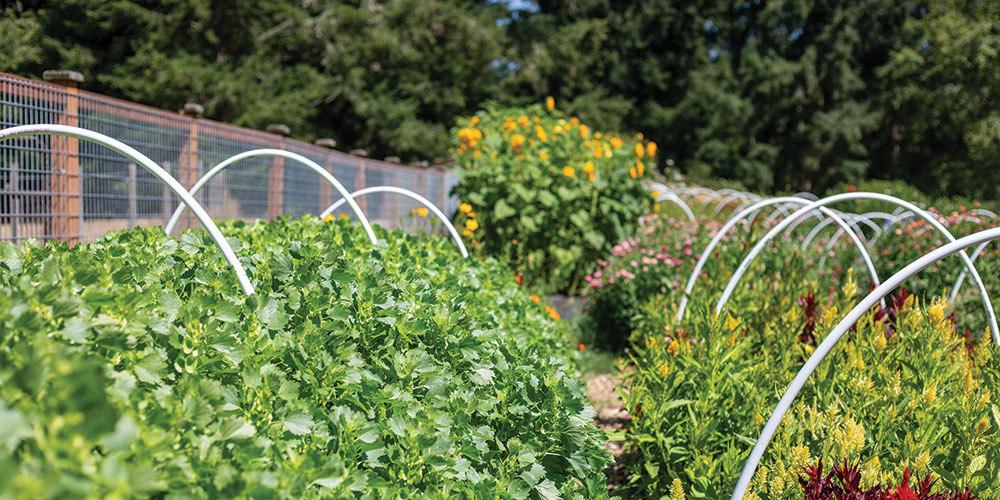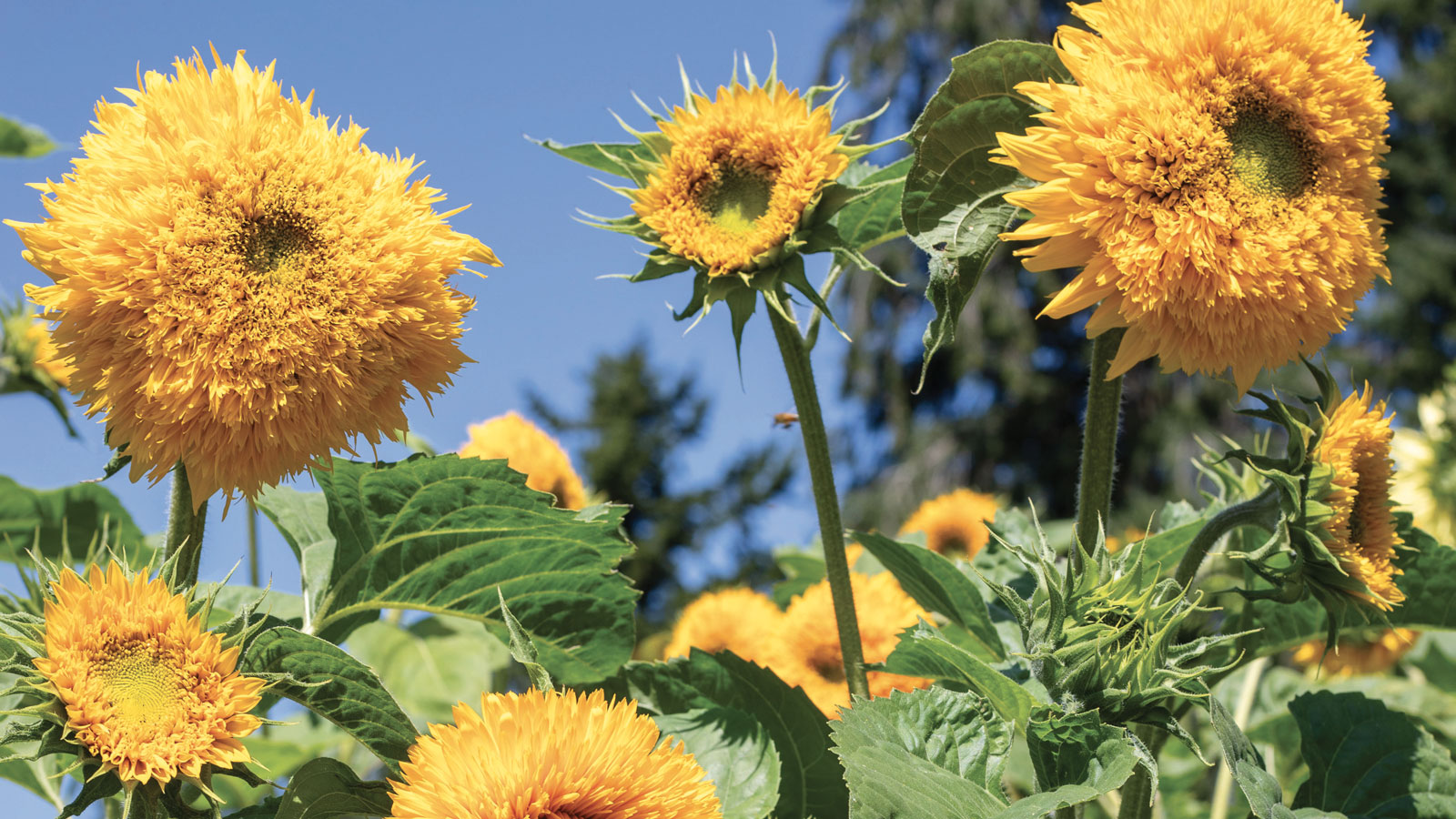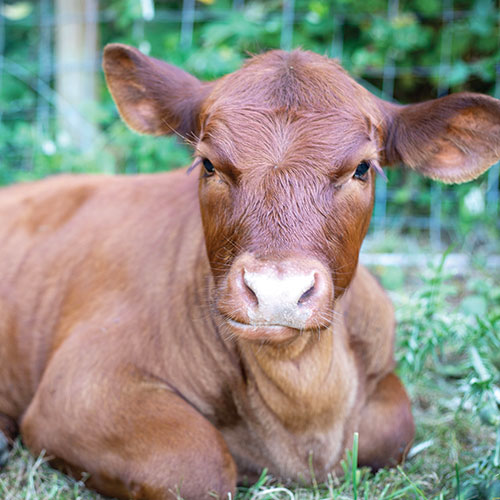Island Grown Impact
By Jennifer Dunlap • Photos by Slow food whidbey Island
The downsides of fast food are pretty well known by now: empty calories, excessive fats and sugars, preservatives, and ingredients sourced from who knows where. The upside? Convenience, and, for some eaters, predictability. But if those qualities tend to define fast food, what are the qualities of slow food?
The Slow Food movement, which began in Italy during the 1980s, promotes the principles of local, fresh, and seasonal foods while encouraging people to return to the table for home-grown, homemade meals—and the human connections fostered by such fare. More than 40 years after its founding, the movement’s global focus includes supporting farms to create stronger, more secure food systems.
It’s only natural then that this emphasis on food systems should make its way to Whidbey Island, with its rich agricultural history. Rolling fields of wheat, rustic farm buildings, and herds of cattle dot the landscape. Traveling across the island, farm stands greet visitors with fresh eggs, delicious produce, and a connection to a more rural lifestyle.
That would explain why, in 2024, Slow Food Whidbey Island (SFWI) Board President Karen Meyer saw a natural and necessary connection between the Slow Food movement’s values and Whidbey Island’s unique ecosystem. As the board president of the largest Slow Food chapter in the United States, Meyer aimed to refine its focus to make a deeper impact in the island community.
“When I joined SFWI in 2023, I was in a position to learn from the board what the focus had been for the chapter,” Meyer said. “Because slow food depends on local ingredients and local farmers, we explored expanding our mission. This included ways we could better connect with the small-scale farms, the established farm-to-school programs, and the island’s food insecurity initiatives.”
“Farms of all sizes need to be encouraged, and the ‘backyard’ or small farm that SFWI supports today may become the newest member of the Bayview Farmers Market tomorrow.”
Although the movement is known as Slow Food, Meyer and the SFWI board were eager to fast track these expanded components of the organization’s mission—which began with connecting with farmers.
“Local farmers support our island community by providing us with healthy, nutrient-dense foods,” Meyer explained. “When farmers succeed, the entire island community prospers. As we experience the effects of climate change, farmers are directly impacted, making our support even more crucial.”
In 2024, SFWI launched the Farm Funding Program to align the organization’s mission with more support for the local farming community.
Meyer contacted Marian Myszkowski at Goosefoot—an organization focused on finding solutions to address community needs—who responded enthusiastically, as did SFWI members.
“Marian then assisted with drafting an email to local farmers, introducing the SFWI funding opportunity and asking them to complete a simple application identifying what they needed and how much it would cost,” she recalled.
“We received clear, concise, and humble descriptions of their needs,” Meyer said. “When we were designing the program, I had concerns we would not be able to provide enough to really do some good,” she admitted. “Marian assured me that any amount, however small, would make a difference.”
“Slow Food Whidbey Island understands that ‘eating local’ transcends enjoyment and indulgence,” said Myszkowski, who is the director of programs at Goosefoot. “They make it a point to be aware of the realities of farming and that a community needs to find ways to ‘feed’ their farmers. Farms of all sizes need to be encouraged, and the ‘backyard’ or small farm that SFWI supports today may become the newest member of the Bayview Farmers Market tomorrow.”
With financial support from the community, the program funded four farm projects: fencing, the expansion of raised beds, materials to construct a farm stand, and an auger/post-hole drill to secure gardens and chicken coops. These seemingly small-scale improvements had a significant impact on the farms.
Meyer’s commitment to SFWI is deeply rooted. Her ancestors farmed in the San de Fuca and Coupeville areas on Whidbey Island in the late 1800s. Her children live here now. She is keen to preserve the island for future generations.

Looking ahead, Meyer is optimistic about the future of SFWI.
“We are looking forward to 2025 and the continuing good we can do. Our community can make an impact by buying local, whether directly via farm stands or CSAs or at farmer’s markets. We also need to help with providing financial support to maintain the sustainability of our farms, and we see the Farm Funding Program doing exactly that.”
The Farm Funding Program may have started off small, but with continued support from the community, Meyer is excited to see how it grows. “We invite anyone interested in learning more about the program, or any of our other initiatives, to contact us. Even a little support can make a big difference.”
Perhaps the best way to think of it is an investment in the future food on your table, prepared, of course, the slow way.
To learn more about Slow Food Whidbey Island, visit slowfoodwhidbeyisland.org.



